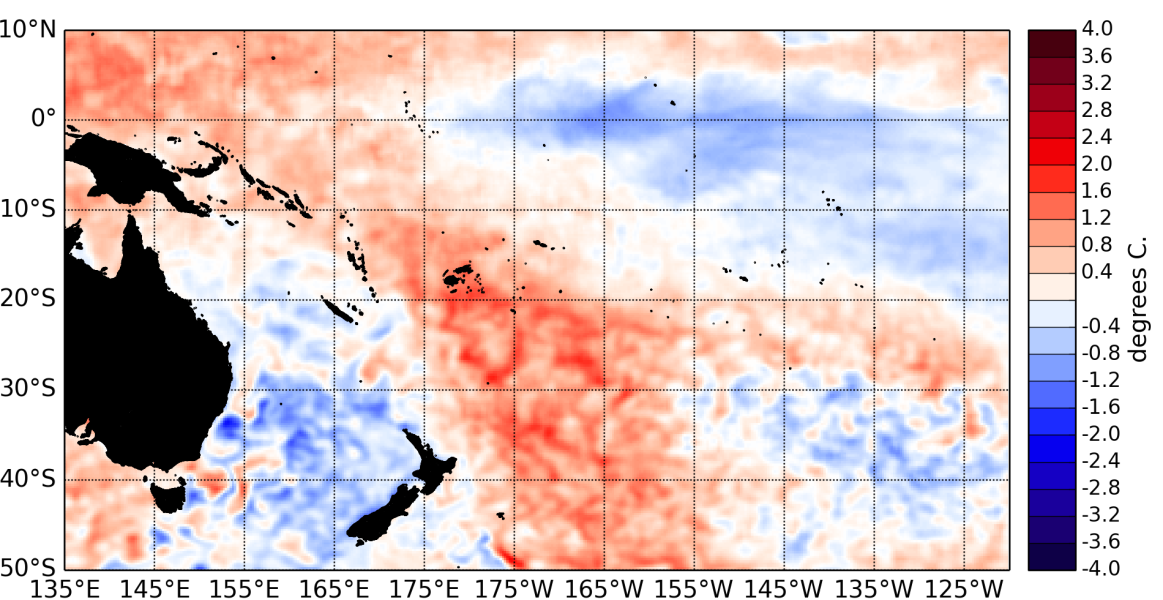The tropical Pacific ocean remained in a neutral state (neither El Niño nor La Niña) in January 2014.
The central and eastern Pacific has cooled slightly in January 2014 compared to December 2013.
The NINO4 sea surface temperatures (SST) index (in the western Pacific) is currently at 0°C for January (down from 0.3°C in December). The NINO 3 value is –0.17°C for the month of January and NINO 3.4 is negative at –0.27°C (was +0.17°C in December).
The large area of higher than normal SSTs that has been a persistent feature of the central east Pacific has weakened in amplitude in January 2014.
Subsurface waters are currently much warmer (up to + 3°C ) than normal in the western Pacific at about 150m. deep, while slightly cooler than normal waters are present at about 50m deep in the eastern Pacific. This indicates a thermocline tilted to the west, a pattern usually associated with La Niña.
The trade winds are currently close to normal (as of 2 February), but a strong westerly wind burst, associated with a Madden–Julian Oscillation (MJO) pulse, has affected the far western Pacific during the last two weeks of January.
The Intertropical Convergence Zone (ITCZ) was shifted north of its climatological position in the central and east Pacific.
The latest value for the TRMM ENSO index for the 30 days to 7 January is –0.01 .
The SOI is positive at +1.4 for January 2014.
The MJO has been very active in the western Pacific in last 2 weeks of January. The MJO forecasts for the next two weeks indicate possible intensified intra–seasonal convective activity over the maritime continent and western Pacific.
The consensus forecast from IRI / CPC indicates that neutral ENSO conditions are very likely to persist over the January – March 2014 period, with 88 % chance, versus 4 % for La Niña and 8 % for El Niño.

